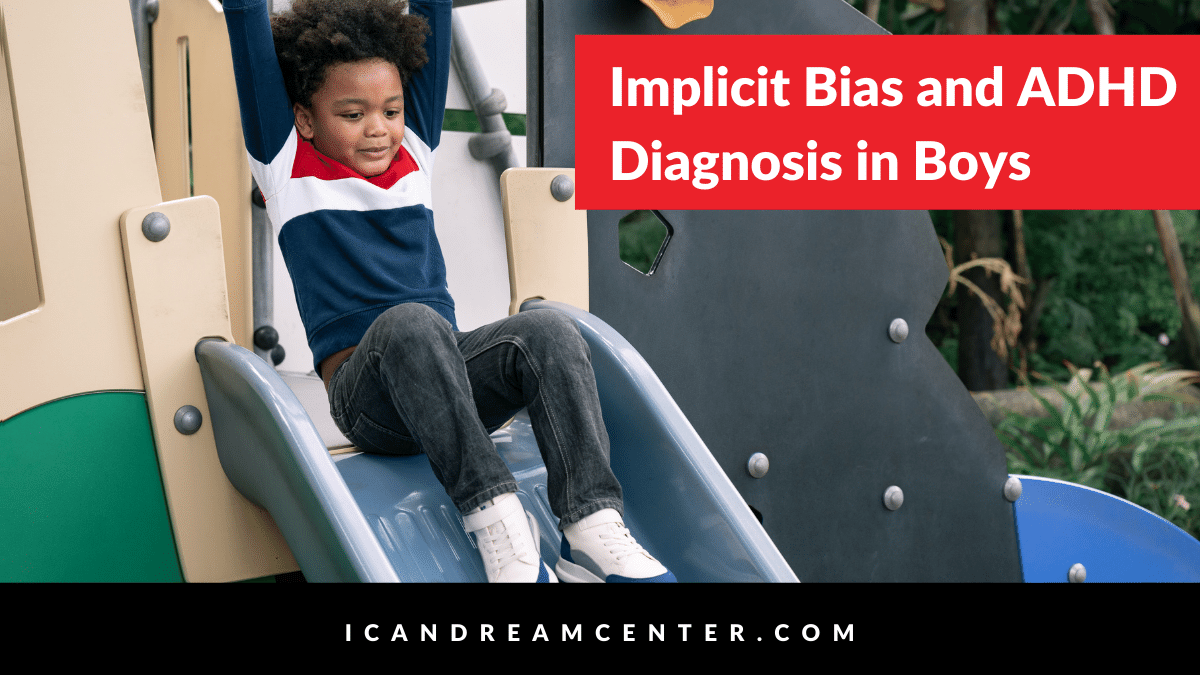
Implicit Bias and ADHD Diagnosis in Boys
What does it mean to be a black or brown boy with ADHD?
It can mean he displays symptoms of attention-deficit/hyperactivity disorder, but he does not have a diagnosis.
It may mean that a black or brown boy is appropriately diagnosed with ADHD, but because implicit bias is an issue facing schools and society, he may not receive high-quality ADHD treatment.
It could even mean that despite diagnosis and treatment, the people he interacts with in educational settings misunderstand and mistreat him.
“An estimated 8.4% of children have attention-deficit/hyperactivity disorder. It is often first identified in school-aged children when it leads to disruption in the classroom or problems with schoolwork.” It is more common among boys than girls. Attention-deficit/hyperactivity disorder or ADHD is a very common mental disorder that affects school-age children and adults. Symptoms for AHDH can include but are not limited to the inability to remain focused or maintain attention, excessive movement, and impulsive moments of decision-making with minimal planning.

Research shows that on average, children of color, specifically black and Latino children, show symptoms just as frequently as their white counterparts, but are diagnosed at a far lower rate. “Black children in the USA were 70% less likely to receive a diagnosis of ADHD in comparison to white children.”
Research shows that on average, children of color, specifically black and Latino children, show symptoms just as frequently as their white counterparts, but are diagnosed at a far lower rate. “Black children in the USA were 70% less likely to receive a diagnosis of ADHD in comparison to white children.”
Why is it important for black and brown children to get properly diagnosed?
One of the obvious reasons is to receive adequate support. If ADHD is not properly diagnosed, some of the presenting behavior associated with the disability has been seen as defiance and opposition in educational settings.
Instead of a child getting needed supports, black and brown children are frequently subject to punitive repercussions; not to mention the long-term affects that linger such as suffering grades, lack of school involvement, challenges to maintain employment, and in some cases, juvenile detention, or imprisonment. “One meta-analysis estimates that 25 percent of the incarcerated population has ADHD, with the prevalence increasing to 30 percent among incarcerated juveniles.”
There must be a multidimensional approach to the early diagnosis of black children, specifically black and brown boys with ADHD.
First, when medical practitioners examine student behavior for diagnoses, an equity lens must be applied. Bias should be examined and checked.
Medical providers should give every family educational information about ADHD and the resources available to support the child.
Educators must provide the highest level of support to every student with ADHD.
As educators, we should recognize the difference between Oppositional Defiance Disorder and Attention Deficit Hyperactivity Disorder. All educators should have a keen awareness of why it’s so important for black and brown students to have a correct school identification and clinical diagnosis.
Educators should advocate for their students when they suspect eligibility and/or clinical diagnosis is not accurate.
Schools should go a step further by providing professional development to educators around the realities of race and under-diagnosis of ADHD in black and brown students.
Finally, educators must continually examine their implicit bias, particularly when it comes to behavior in school.
If you are the parent of a student whom you suspect may have ADHD and has been incorrectly diagnosed by a clinician, don’t be afraid to ask the doctor questions or to get a second opinion.
References
Danielson, ML, et al. Prevalence of Parent-Reported ADHD Diagnosis and Associated Treatment Among U.S. Children and Adolescents, 2016. Journal of Clinical Child & Adolescent Psychology, Volume 47, 2018 – Issue 2
Simon V , Czobor P , Bálint S , et al: :Prevalence and correlates of adult attention-deficit hyperactivity disorder: a meta-analysis. Br J Psychiatry194(3):204–211, 2009
Young, S., Moss, D., Sedgwick, O., Fridman, M., & Hodgkins, P. (2015). A meta-analysis of the prevalence of attention deficit hyperactivity disorder in incarcerated populations. Psychological medicine, 45(2), 247–258. https://doi.org/10.1017/S0033291714000762
